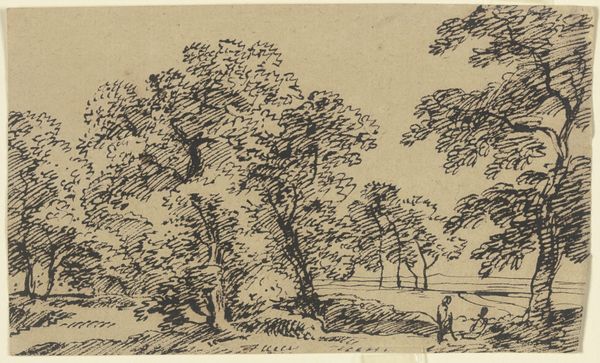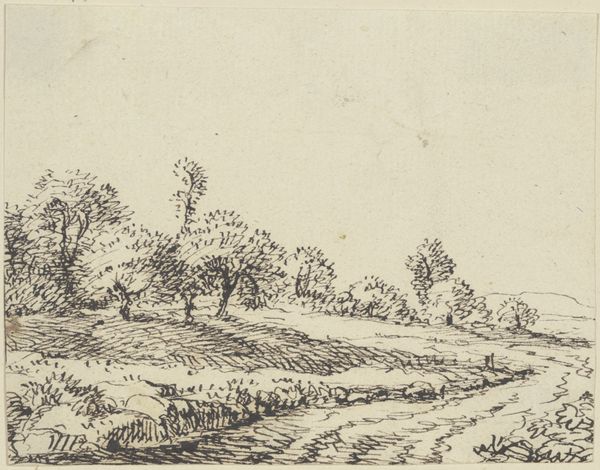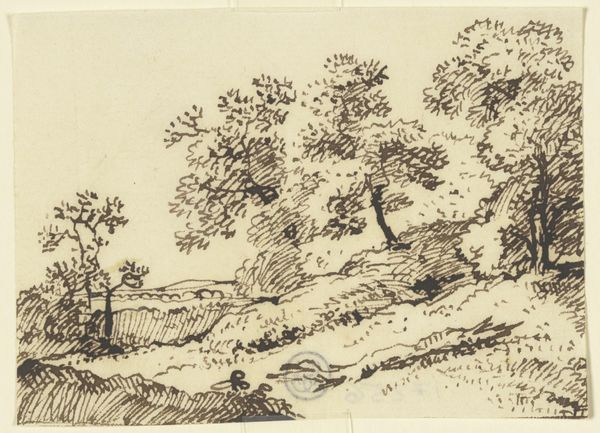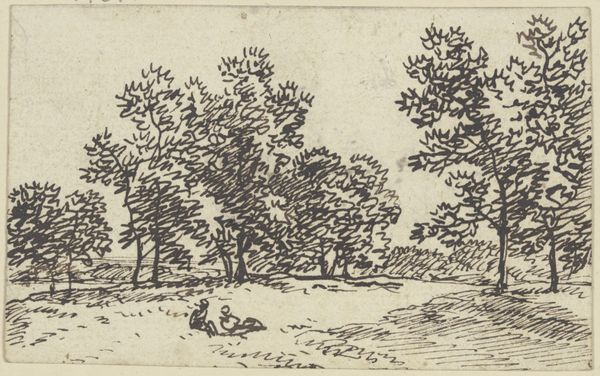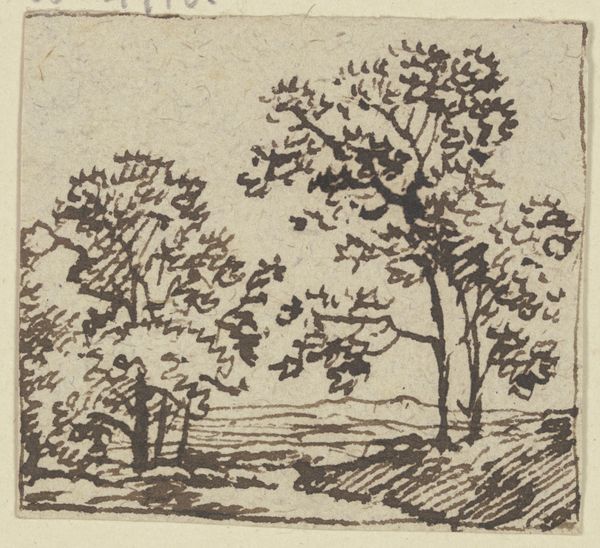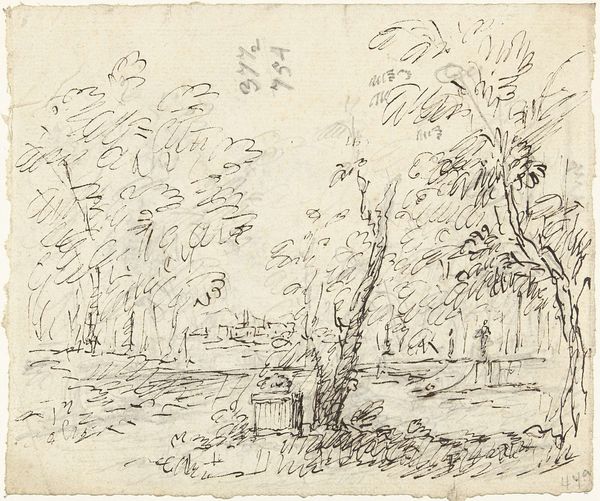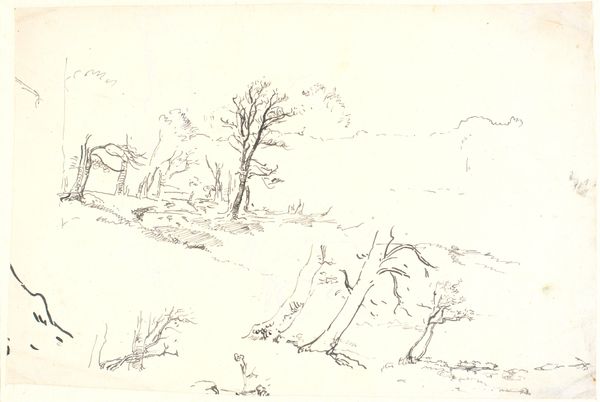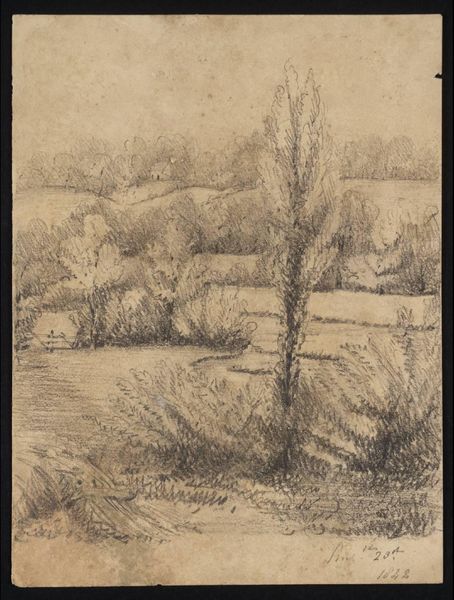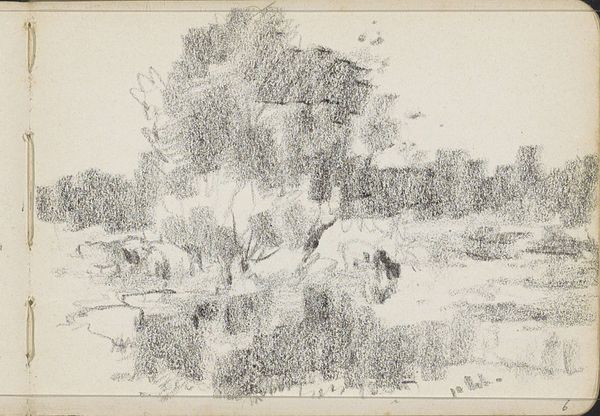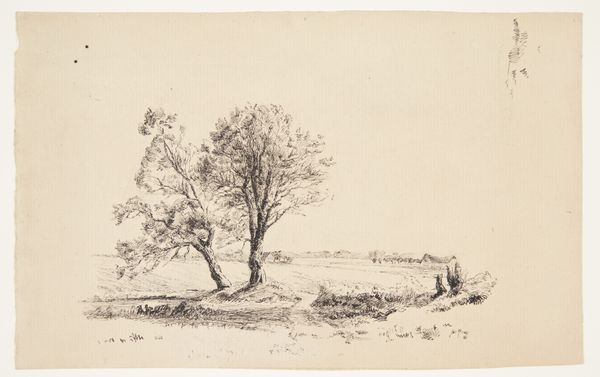
drawing, paper, ink
#
drawing
#
landscape
#
paper
#
ink
#
abstraction
Dimensions: height 165 mm, width 223 mm
Copyright: Rijks Museum: Open Domain
Editor: This is "Heide bij Ede," a landscape drawing in ink on paper by Dick Ket from 1926. I find the rough, almost scribbled lines quite intriguing. What's your take on this work? Curator: Well, seeing it through the lens of history, Ket created this in a time of reconstruction following the First World War, where many artists turned towards finding solace and inspiration in nature. However, there is an element of anxiety and an absence of any figures in this landscape, a theme in art between the wars. What does the lack of any human presence communicate? Editor: That's a good question. Perhaps a sense of isolation, or the overpowering force of nature? I’m also struck by the deliberate abstraction within what is recognizably a landscape. It feels like a rejection of traditional, romantic landscape painting. Curator: Precisely. Think about the rise of abstraction and its inherent political statement—a distancing from representational art, often seen as aligned with establishment. It served as an act of rebellion against the prevailing social and artistic norms. This ties to his health situation as well; isolated by sickness from society he might try to challenge the status quo through imagery. Editor: That context adds a whole new layer to my understanding! The energetic yet somewhat unsettling quality of the ink lines, the focus on the wild nature instead of cultivation... It speaks volumes. Curator: Indeed. How do you think the museum setting itself impacts our reading of a drawing like this today? Editor: Hmmm... it's easy to see it as a beautiful, simple drawing, but placing it in the Rijksmuseum gives it weight and meaning. Curator: Museums certainly contribute to constructing our historical narratives, shaping our view of the art within, isn't it? Editor: Definitely. I see now how an artwork isn’t just an object but a reflection of the socio-political forces surrounding its creation and exhibition. Curator: Exactly, and that makes the study of art so endlessly rewarding!
Comments
No comments
Be the first to comment and join the conversation on the ultimate creative platform.

